All about the alpine horn
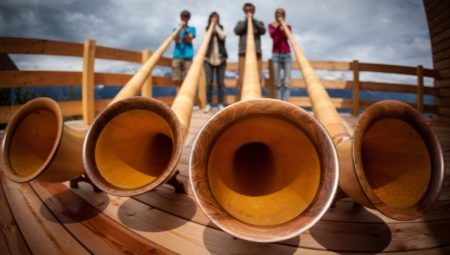
Many modern musical instruments have been known for a long time. But not every instrument was able to retain its identity and sound characteristics. Shepherds have not used the Alpine horn for a long time, and the signal for help can be given in other well-known ways. But he is rightfully considered a symbol of his country and part of its history.
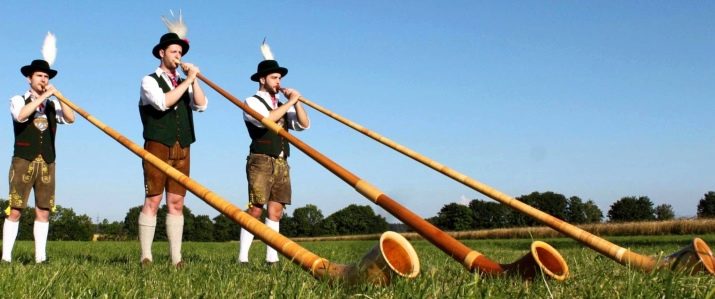
What it is?
The Alpine Horn or, as it is also called, the Alpine Horn is a wind musical instrument up to 5 meters long. This is a kind of ancient Swiss symbol that originally served as a subject for the transmission of military signals. Details of his true origins are unknown, but it is believed that his homeland is in Asia.
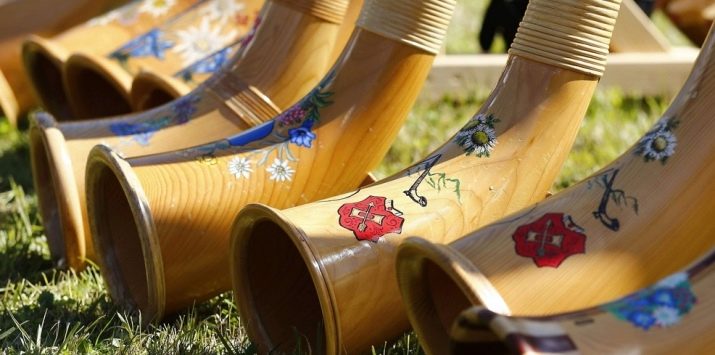
The mountain shepherds used the alpine horn for communication. With his help, they summoned herds and informed the villagers of the dangers. A calm melodic sound meant safety; a sharp intermittent warning of an impending disaster.
History
The first sources describing the existence of the alpine horn date back to 1555. The famous naturalist Konrad Gessner, having seen a horn in the Alps on Mount Pilates, spoke about it in his work. A one of the engravings from 1754 depicts a shepherd with an alpine horn and cows climbing the high slopes of the mountains.
In those days, the horn was used as a kind of ritual for evening prayer, although in Switzerland, in its central part, bells were preferred.
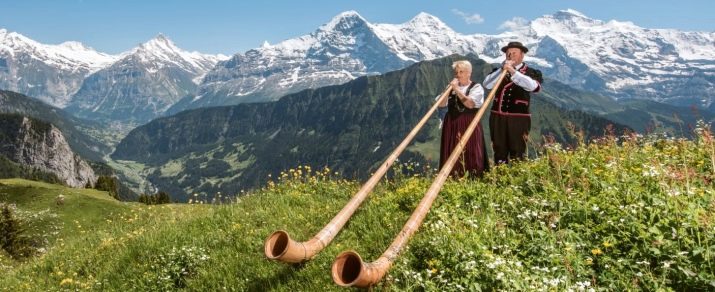
At the beginning of the 19th century, cheese began to be produced on dairy farms, and not in the Alps. The use of the forge was no longer so necessary. About him has not been heard for several years. By the 20s of the 19th century, Niklaus von Müllen decided to resume production and demand for alpochrons.He brought together the best performers of Grindelwald, and now the horn has become not just a means of communication, but a full-fledged musical instrument.
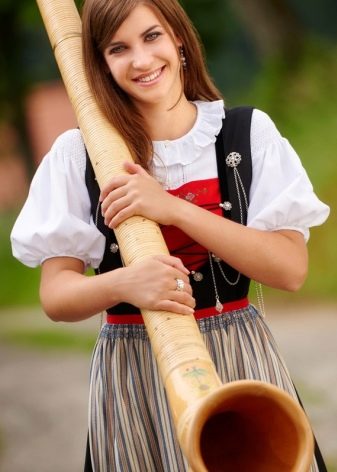
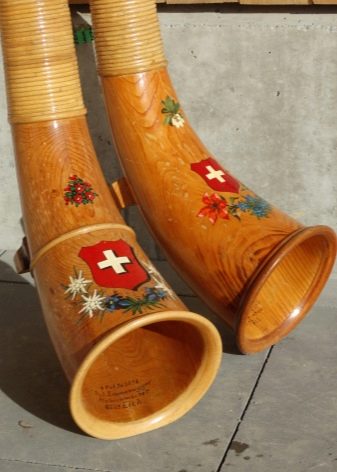
Johann Brahms wrote the musical part for the alpine horn in 1868 and included it in his First Symphony.
Over time, the alpine horn became a local landmark and symbol of Switzerland.
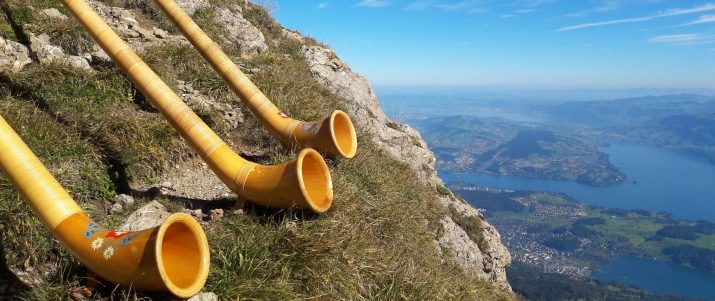
In the old days, the horn was made from spruce growing in the mountains. Because of this, its shape was originally curved. The trunk was sawn into two parts and hollowed out inside with chisels. Then the halves were connected with willow twigs, wrapped with twine and wrapped in birch bark or cherry tree bark. After that, they again tied them with hazel branches or a cloth smeared with resin.
The recess at the top served as a mouthpiece. At that time, the horn was no more than 2 meters. Its sound depended on the length and thickness of the tree trunk. During the game, he was held in weight.
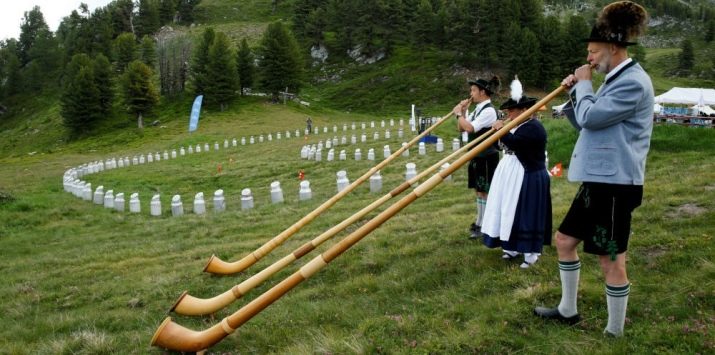
A modern horn is made using the same technology, but different types of wood are used. Now the horn is rarely complete, usually it is assembled in parts. Recently, they began to use a separate mouthpiece, which is attached already during the game.
How does it sound?
Usually, musical instruments change over time. They will be improved depending on the convenience of the game for the performers. Alpochron, after so many years, has retained its identity. It combines the sounds of both brass and wind instruments.
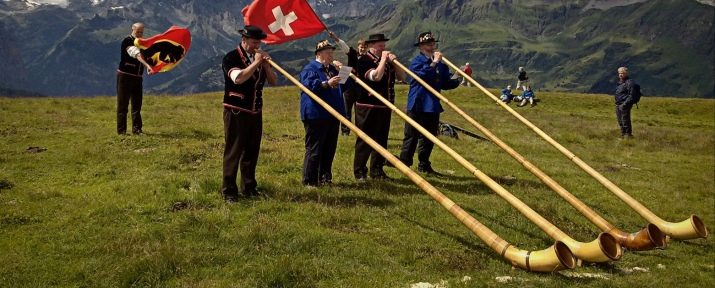
Since the alpine horn does not have holes for fingers and all kinds of valves, it can be used to create a scale of only natural sounds. The number of sounds is small, and they are at large intervals between themselves.
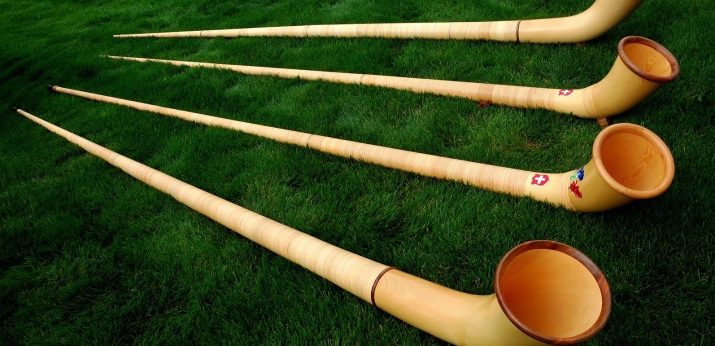
The sound scale of the alpine horn resembles that of a natural pipe. Its main feature is the "impure" note "F", it sounds in the range between "F" and "F sharp". This note is used in yolder songs.
It is believed that the horn became the ancestor of the famous singing.
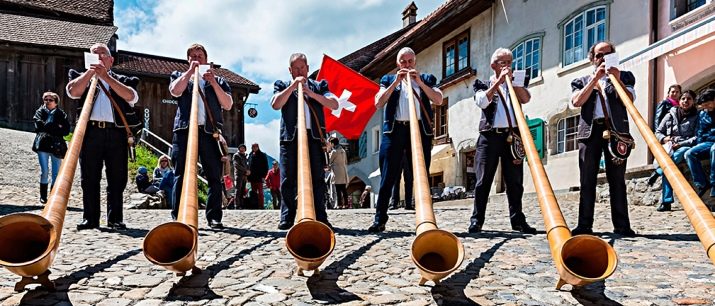
Where can you hear?
The sound of this instrument can be heard in various folklore programs and shows.
There is a specially written repertoire for the horn, which is mainly performed:
- Leopold Mozart "Pastoral Symphony for Alpine Horn and Strings", 1755;
- Jean Detwiler, Concert for the Alpine Horn, 1971;
- Ferenc Farkasa "Concertino rustico for alpine horn and strings", 1977.
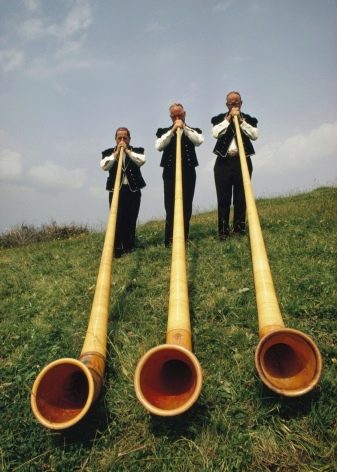
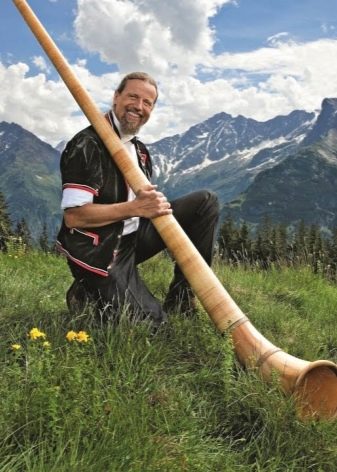
Now around the world there are about 2,000 people who master the art of playing the alpine horn. It is played by every member of the Swiss Yodeler Association. Musical compositions performed on the Alpochrone can be heard during the Swiss Yodling Festival or in parades organized by the Swiss Traditional Costume Association, as well as at the International Alpochrone Festival in Nanda.









